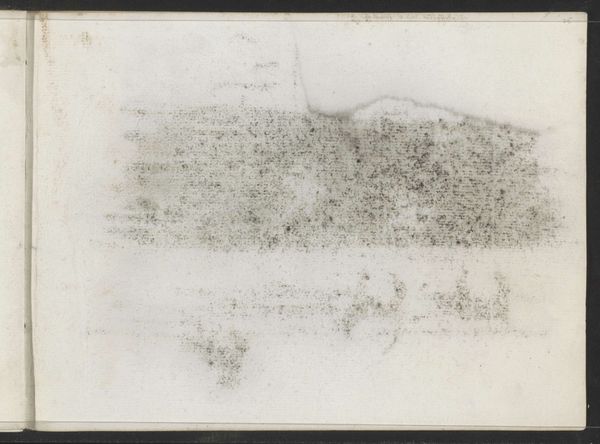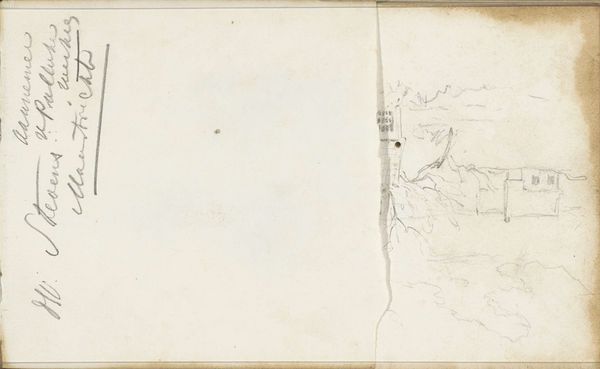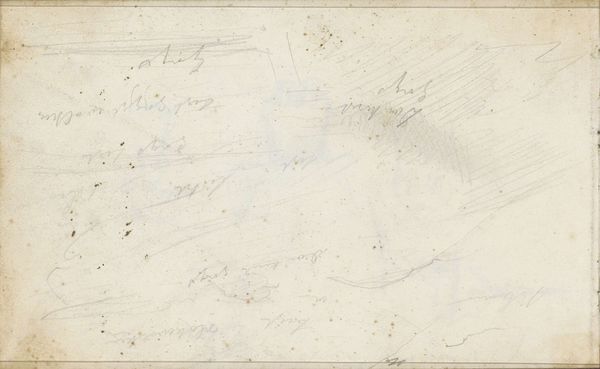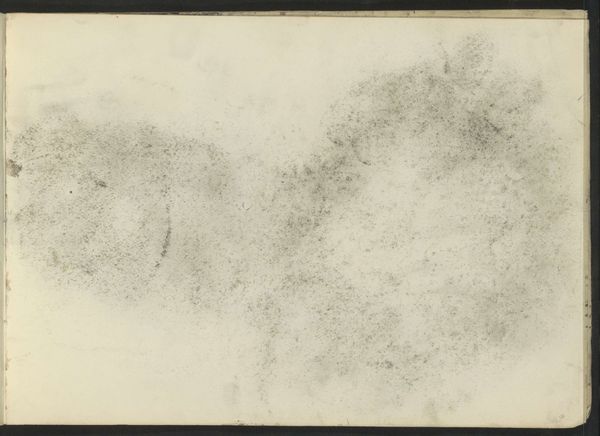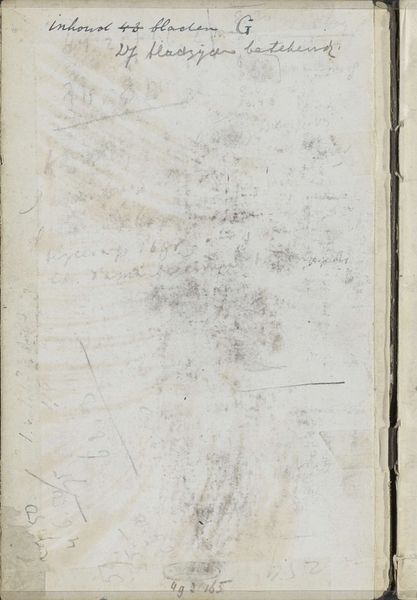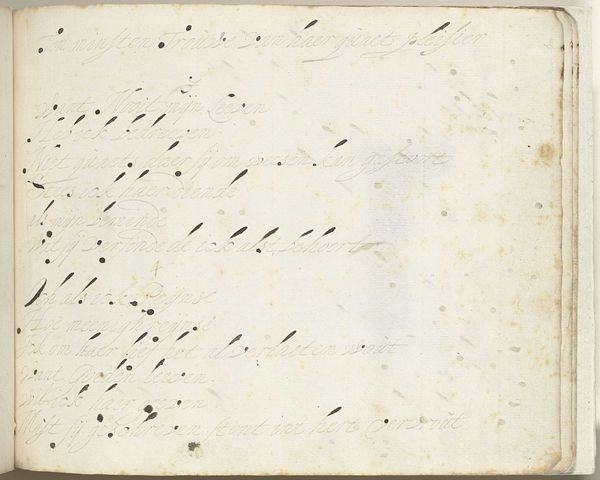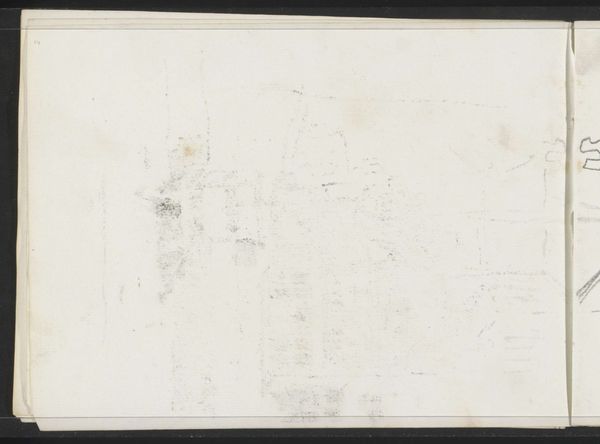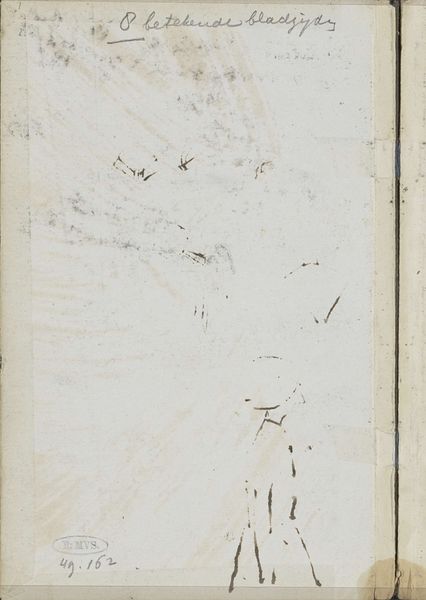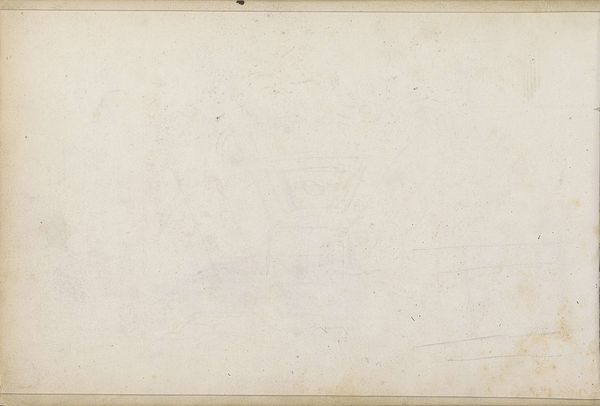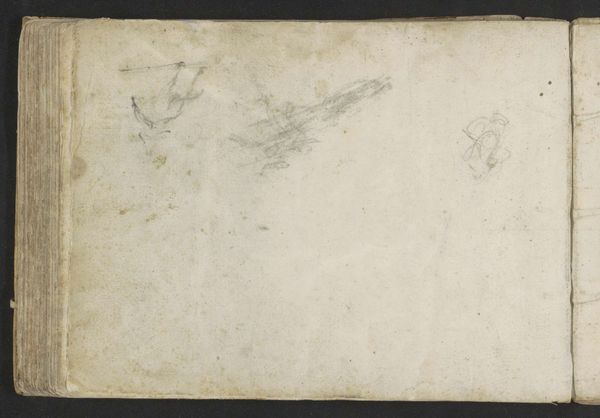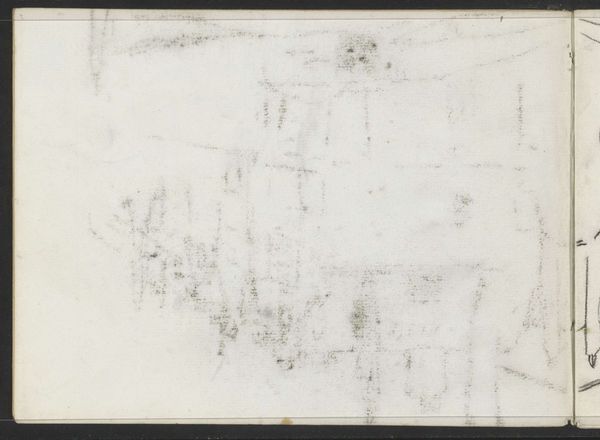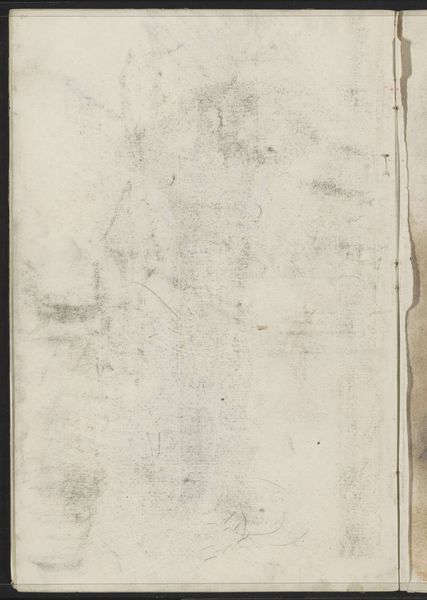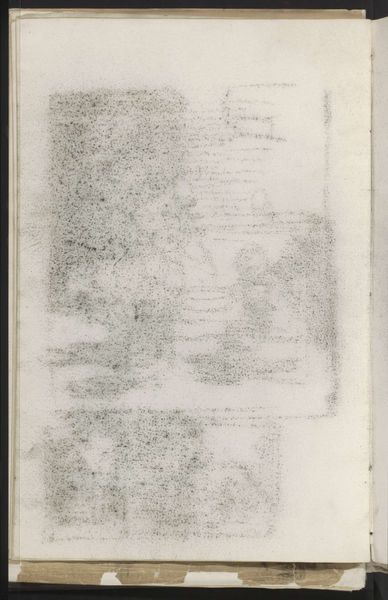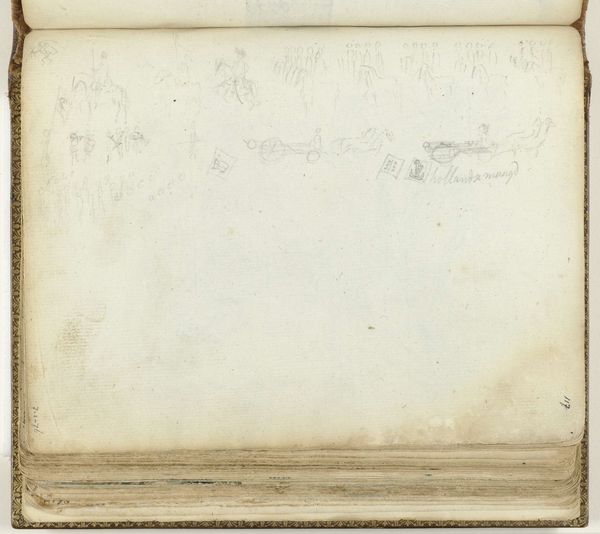
drawing, paper, pencil
#
portrait
#
drawing
#
paper
#
coloured pencil
#
romanticism
#
pencil
#
watercolor
Copyright: Rijks Museum: Open Domain
Curator: We are looking at a work titled "Studie," or Study, by Sybrand Altmann, dating from around 1840 to 1843. It's currently held at the Rijksmuseum. What catches your eye about it? Editor: The page is wonderfully marked, it gives me the sense of the time that passed while the image rested undisturbed, of watermarks and smudges, you know like a book discovered in some dusty attic. Its moodiness, and you may laugh, but I want to put on gloves so that the dirt does not get in the pages! Curator: It's not dust; the piece utilizes colored pencil, graphite, and watercolor on paper, representative of Romantic portraiture practices of that era. These works are inherently fragile. The materials employed are critical here, reflecting the burgeoning availability and standardization of art supplies during this period, affecting accessibility. Editor: So even mundane materials tell us stories. Curator: Precisely. These materials point toward changing class dynamics surrounding art production as well, and the impact that mass production of art supplies made during Altmann's time. Editor: Still, despite the humble medium, it's the evocative impression that wins me over, though! Can't you feel its fragile quality? As if even our looking could dissolve what little is here? There's a tender whisper held on the page, which must be considered along with what it shows us. Curator: Well, and remember the labor involved. Preparing these materials, layering colors. It implies artistic skill but also the economic structures allowing someone like Altmann to dedicate time and resources to these studies. What does it tell us about the economy of image making during Romanticism? Editor: It certainly seems that the ghost of a face haunts this page, as if something alive once left this evidence. Curator: Exactly. And that ghostly face you perceive connects directly to Romanticism, an obsession with interiority. This piece invites the spectator into that space, encouraging them to delve into the individual and, perhaps, connect it to social, artistic or material reality. Editor: Seeing the artist's traces so intimately… It nudges my imagination to make the unseen present, a collaboration with someone long since past. Thanks for drawing me back to a larger conversation with materials and contexts. Curator: Always. These studies remind us that a thorough investigation should delve beneath surface aesthetics into materiality to reveal broader contexts for creating, circulating, and engaging with art.
Comments
No comments
Be the first to comment and join the conversation on the ultimate creative platform.
